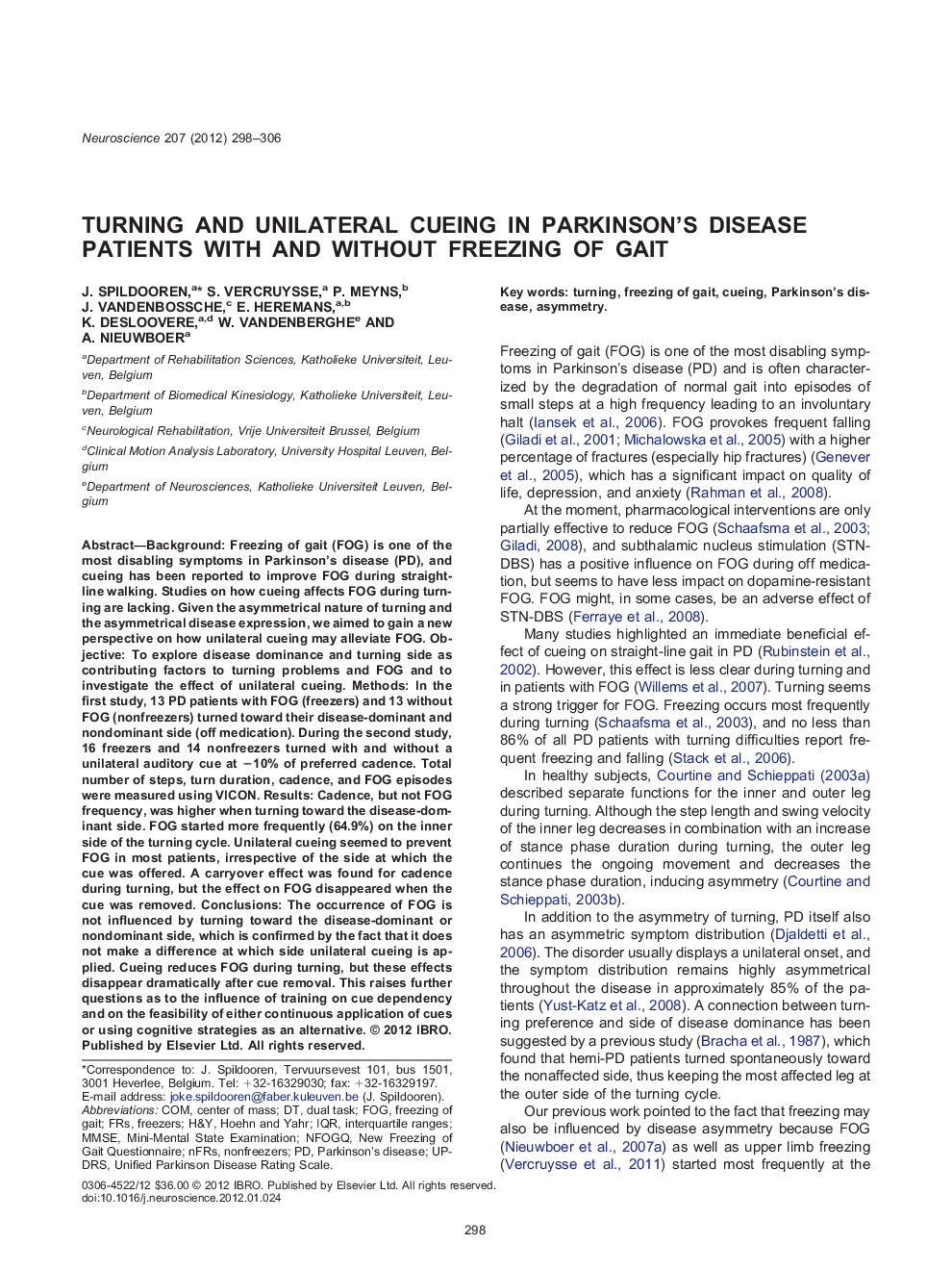| کد مقاله | کد نشریه | سال انتشار | مقاله انگلیسی | نسخه تمام متن |
|---|---|---|---|---|
| 4338597 | 1614869 | 2012 | 9 صفحه PDF | دانلود رایگان |

Background: Freezing of gait (FOG) is one of the most disabling symptoms in Parkinson's disease (PD), and cueing has been reported to improve FOG during straight-line walking. Studies on how cueing affects FOG during turning are lacking. Given the asymmetrical nature of turning and the asymmetrical disease expression, we aimed to gain a new perspective on how unilateral cueing may alleviate FOG. Objective: To explore disease dominance and turning side as contributing factors to turning problems and FOG and to investigate the effect of unilateral cueing. Methods: In the first study, 13 PD patients with FOG (freezers) and 13 without FOG (nonfreezers) turned toward their disease-dominant and nondominant side (off medication). During the second study, 16 freezers and 14 nonfreezers turned with and without a unilateral auditory cue at −10% of preferred cadence. Total number of steps, turn duration, cadence, and FOG episodes were measured using VICON. Results: Cadence, but not FOG frequency, was higher when turning toward the disease-dominant side. FOG started more frequently (64.9%) on the inner side of the turning cycle. Unilateral cueing seemed to prevent FOG in most patients, irrespective of the side at which the cue was offered. A carryover effect was found for cadence during turning, but the effect on FOG disappeared when the cue was removed. Conclusions: The occurrence of FOG is not influenced by turning toward the disease-dominant or nondominant side, which is confirmed by the fact that it does not make a difference at which side unilateral cueing is applied. Cueing reduces FOG during turning, but these effects disappear dramatically after cue removal. This raises further questions as to the influence of training on cue dependency and on the feasibility of either continuous application of cues or using cognitive strategies as an alternative.
▶Cadence, but not FOG, increased when turning toward the disease-dominant side. ▶FOG started more frequently at the inner side of the turning cycle. ▶Unilateral cueing prevents FOG in most patients. ▶Which side cueing is offered is of no importance to reduce FOG. ▶FOG is related to the breakdown of automaticity.
Journal: Neuroscience - Volume 207, 5 April 2012, Pages 298–306